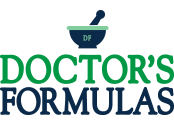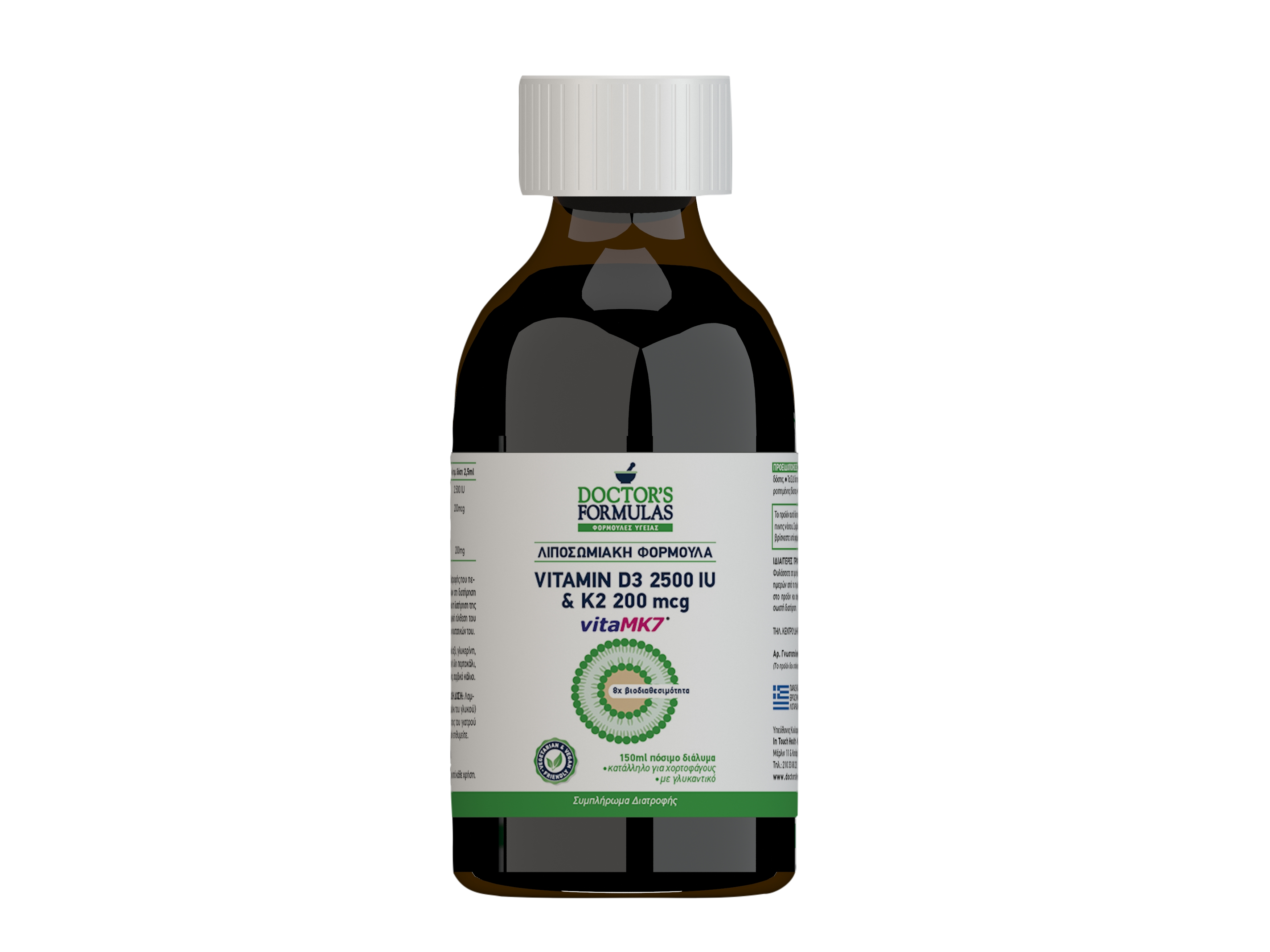Bone Mineral Density & Vitamin K (MK-7)
MK-7 and Its Effects on Bone Quality and Strength
Vitamin K acts as a cofactor and is required for post-translational γ-carboxylation of vitamin K-dependent proteins (VKDP). The current recommended daily intake (RDI) of vitamin K in most countries has been established based on normal coagulation requirements.
Vitamin K1 and menaquinone (MK)-4 has been shown to decrease osteocalcin (OC) γ-carboxylation at RDI levels. Among the several vitamin K homologs, only MK-7 (vitamin K2) can promote γ-carboxylation of extrahepatic VKDPs, OC, and the matrix Gla protein at a nutritional dose around RDI.
MK-7 has higher efficacy due to its higher bioavailability and longer half-life than other vitamin K homologs. As vitamin K1, MK-4, and MK-7 have distinct bioactivities, their RDIs should be established based on their relative activities.
MK-7 increases bone mineral density and
promotes bone quality and strength.
Collagen production, and thus, bone quality may be affected by MK-7 or MK-4 converted from MK-7. In this review, we comprehensively discuss the various properties of MK-7.
Vitamin K acts as a cofactor to -glutamyl carboxylase (GGCX), an enzyme that catalyzes glutamic acid residues of specific proteins to -carboxyglutamic acid (GLA) to form Gla-containing proteins. These proteins also called vitamin K-dependent proteins (VKDPs). When intake of vitamin K is insufficient, VKDPs are not fully activated and fail to execute their specific functions.
Numerous blood coagulation factors, including coagulation factors II (prothrombin), VII, IX, and X, and anti-coagulation factors, such as proteins C, S, and Z, are well-known examples of VKDPs and are synthesized in the liver.
Thus, vitamin K is an indispensable nutrient for normal blood coagulation, and its deficiency rarely occurs in adults.
Functions of extrahepatic VKDPs have been extensively studied. Several VKDPs play important roles in maintaining bone metabolism and inhibiting ectopic calcification, leading to bone and cardiovascular health improvement.
For example, osteocalcin (OC) is synthesized by osteoblasts, the matrix Gla protein (MGP) is synthesized in vascular smooth muscle cells, cartilage, and bones, and the Gla-rich protein (GRP) is expressed in the cartilage and bones. Growth arrest-specific protein 6 (Gas6) expressed in the brain is involved in cell proliferation.
On the other hand, the functions of certain VKDPs, that is, proline-rich Gla protein 1 (PRGP1), PRGP2, transglutaminase 3 (TGM3), and TGM4 are still not well-known. The VKDP GGCX is also expressed in almost all tissues. and there might be other VKDPs that are yet to be discovered.
In addition to activating various VKDPs, vitamin K acts as an antioxidant, and vitamin K2 or menaquinone-4 (MK-4) acts as a ligand of the steroid and xenobiotic receptor/pregnenolone X receptor (SXR/PXR).
Thus, vitamin K is expected to have various health benefits,
preventing or alleviating cardiovascular disease, bone fracture, diabetes mellitus,
cancer, liver disease, chronic kidney disease, immune disorder, neurological disease, and obesity.
Recently, vitamin K2 (MK-7) has been found to be highly effective in activating extrahepatic VKDPs at nutritional doses. In this study, we review the properties of MK-7.
The two naturally occurring forms of vitamin K are vitamin K1 (phylloquinone) and vitamin K2 (menaquinone (MKs or MK-n).
Vitamin K1 occurs in various green vegetables and plant oils and is the primary dietary source of vitamin K. Vitamin K1 is present in the chloroplast membrane of leafy green vegetables. Vitamin K2 has a variable side chain length of four to 15 isoprene units and is referred to as MK-n, where n denotes the number of isoprenoid units. A small amount of MK-4 is found in animal products, such as eggs, meat, and liver. MK-4 in animal foods results from the conversion of vitamin K1 in plant feed or menadione (a synthetic analog of vitamin K, containing only the 2-methyl-1,4-naphthoquinone ring structure), provided to animals as a feed additive.
The long-chain MKs, such as MK-7–MK-9, are found in fermented foods. These MKs are also bacterial products found in fermented foods. A Japanese traditional food, natto, is a unique soybean product fermented with a specific kind of Bacillus subtilis and contains MK-7 at a very high concentration.
Bacteria present in the colon produce a substantial quantity of long-chain MKs. The extent to which intestinal bacteria-derived MKs contribute to the daily requirement of vitamin K has been a matter of debate. However, it is thought that MKs derived from intestinal bacteria are difficult to be absorbed in the distal digestive tract, and some experiments have shown that MKs derived from
intestinal flora alone is insufficient.
Vitamin K1, MK-4, and MK-7 are currently used for fortification purposes by the food industry and as nutritional supplements.
Osteocalcin has been used as a biomarker for bone metabolism. Vitamin K deficiency leads to an increase in serum ucOC, and a high serum ucOC level has been associated with hip fractures and has been recognized as an independent risk factor for fractures. Since 2007, serum ucOC has been used as a diagnostic marker to evaluate vitamin K deficiency in bones in Japan. A smaller dose of MK-7 can -carboxylate OC compared to doses of K1 or MK-4.
A supplemental intake of 250–1000 μg/day of vitamin K1 activates OC, which is higher than the current RDIs of vitamin K in most countries. A markedly higher dose of MK-4 (600–1500 μg/day) is required to activate OC, as it has been shown to have a very short half-life in humans and it is poorly absorbed. Nutritional doses of MK-4, such as the consecutive intake of 60 μg/day or a single intake of 420 μg, have shown to be ineffective. In contrast, MK-7 at doses around the current RDI (90–180 μg/day) promoted OC carboxylation. A study demonstrated that MK-7 derived from natto has a very long half-life in the serum and induces more complete carboxylation of OC compared to vitamin K1 in humans.
As all vitamin K homologs are converted to MK-4 in tissues, MK-4 is considered to perform other specific functions other than -carboxylation of VKDPs. However, in our previous study, the intake of a nutritional dose of MK-4 did not lead to an increase in MK-4 levels in the extrahepatic
organs of rats, while that of MK-7 led to a significant increase in MK-4 in organs such as the femur, brain, and testis. This implies that to achieve MK-4-specific physiological effects, it might be better to intake MK-7 as an MK-4 precursor than MK-4 itself.
In addition to -carboxylation of VKDPs and the SXR-receptor-ligand by conversion of MK-7 to MK-4, MK-7, the precursor of MK-4, directly activates bone formation by osteoblasts and suppresses bone resorption. It has also been shown that MK-7 stimulates osteoblastogenesis and suppresses osteoclastogenesis by inhibiting the activation of NF-B.
Among vitamin K homologs, MK-7 has been shown to have the highest bioavailability and the most significant effect on OC carboxylation in humans. Vitamin K1 and MK-4 at their current RDIs are not sufficient for the activation of OC. On the other hand, it is expected that MK-7 may promote bone health.
Story Source:
MK-7 and Its Effects on Bone Quality and Strength Nutrients 2020, 12(4), 965; https://doi.org/10.3390/nu12040965


